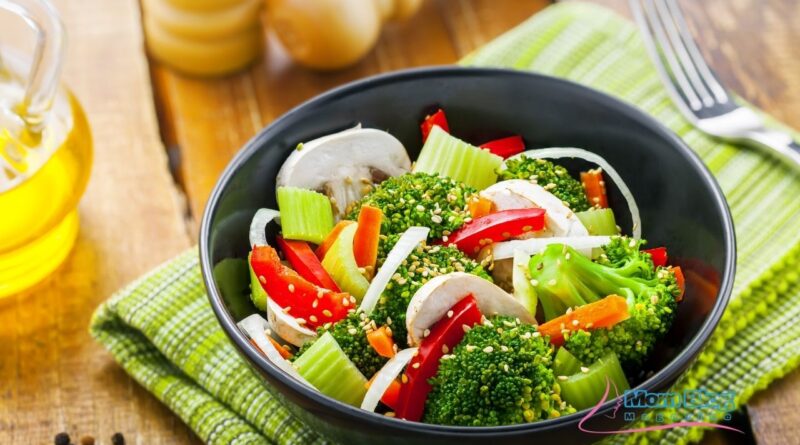Vegetarian Family Meal Plan: How to Easily Feed a Family of All Ages
There are many benefits to eating a vegetarian diet or reducing the amount of meat you eat. It’s good for the environment, cheap and also healthy for the whole family. It can seem very daunting if you’re new to vegetarian cooking, but it’s really so simple. You definitely don’t feel like you’re missing out on meat with these vegetarian family meal plan ideas!
Recipe Ideas
It may seem difficult to think of ideas for vegetarian meals when you’re used to cooking meat, so a good place to start would be to provide you with some meal inspiration! Here are 7 breakfast, lunch, and dinner recipes to kickstart your vegetarian diet!
Breakfast
- Fluffy pancakes with greek yogurt and berries
- Scrambled eggs on toast with vegetarian sausages
- Porridge with honey, chia seeds, cinnamon, and banana
- Huevos Rancheros (Mexican eggs)
- Berry crumble baked breakfast muffins
- Creamy mushrooms on toast with poached eggs
- Shakshuka (baked eggs in tomato sauce)
Lunch
- Falafel and hummus wrap with mango chutney
- Greek pasta salad with olives, feta, and red onion
- Creamy tomato soup with basil and crusty bread
- Cheese toasties
- Caprese salad bagels
- Spinach and cheddar quiche
- Butternut squash, red pepper, and carrot soup with croutons
Dinner
- Homemade pizzas with mushrooms, peppers, and sweetcorn
- Meditteranean vegetable lasagne with salad and garlic bread
- Spinach and feta filo pastry pie
- Vegan chicken nuggets with chips and beans
- Halloumi skewers with Moroccan couscous
- Satay noodles with spring onions, peppers, and Quorn chicken pieces
- Roast dinner with cauliflower cheese and stuffing
Create Your Vegetarian Family Meal Plan
Now that you have some inspiration, it’s time to plan your vegetarian meal. Sit down with your family and decide what you will eat for breakfast, lunch, and dinner each day. Also, don’t forget to add any puddings or snacks to your vegetarian family meal plan. Write down all of the ingredients you will need and make your shopping list. Now, when you go shopping, you will know exactly what you need to get.
Going shopping with a list is helpful in many ways. Most importantly, it helps you save money because you are less likely to buy the things you don’t really need. It will also ensure that you are reducing food waste by only buying exactly what you’re going to use. Take a pen to tick off what you have to make sure you don’t forget something essential when it comes to cooking!
Involve the Family
Many of our children can be a bit fussy when it comes to food, so telling them that they won’t be eating much bacon or chicken anymore might cause a slight reaction. But don’t worry, there are ways to remedy this.
Firstly, perhaps don’t even mention for the first week that you’re only eating vegetarian. When you’re making delicious meals, it is unlikely they won’t even notice that any meat is missing! So, at the end of the week, ask your kids what they thought about the food, and it is likely they will have loved it. After that, explain that you’ll be cutting down on the amount of meat you eat as a family and explain some of their benefits to them. You don’t need to cut meat out completely, but just making it an occasional element in your cooking is the best way forward.
Next, help your kids get involved and excited about the food you are cooking. Take out the coverall bibs, tie back the hair, and get started! There are plenty of safe things the kids could get involved with when it comes to cooking. For example, the berry crumbles baked breakfast muffins or homemade pizzas. Giving them some responsibility will help to make the transition towards a mainly vegetarian diet even easier. Baking and cooking can also contribute to your child’s development, so getting involved with them is a great activity over the weekend.
Double Up On Portions and Freeze
If you have a busy schedule, making big batches and freezing food is a fantastic option. When you have time over the weekend or on a quieter day during the week, try batch making things like spaghetti bolognese, shepherd’s pie, or chili with Quorn mince or vegetables, mixed vegetable curry, soup, pasta sauces, or pizza dough. Buy some reusable food storage tubs that are safe for the freezer and label each one with the contents and the date you made it. The time you can keep each item will differ depending on the ingredients, but 3-6 months is usually a safe estimate. Simply take your food out of the freezer the night before you’ll be using it, pop it in the fridge, and you’ll be good to go the next lunchtime or evening.
Summary
Planning your vegetarian diet really isn’t much different from eating meat. You can find fantastic meat substitutes in supermarkets, or even better, you can try delicious new recipes packed with fruit and veg. Don’t put pressure on yourself or your family to adjust to not eating meat straight away, simply do your best and cut down where you can, and it will make a massive difference to your health, the environment, and your bank balance.




